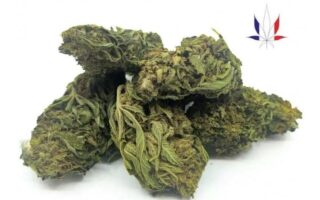Title: The Science of Cannabis: Unraveling the Mysteries of Weed
In a world where the green, leafy plant known as cannabis has transcended its historical boundaries—from a once-stigmatized substance to a focal point of scientific inquiry and social conversation—questions surrounding its effects and mechanisms continually arise. How does weed work, both in the minds and bodies of users? What intricate interplay unfolds within our biology when we consume cannabis, whether through smoking, edibles, or oils? As society embraces a deeper understanding of cannabis, it becomes vital to explore the complex chemistry and biological interactions that define our experiences with this remarkable plant. Join us as we embark on a journey through the anatomy of cannabis, dissecting its components, the science behind its effects, and the implications for therapeutic use and recreational enjoyment alike.
Table of Contents
- Understanding Cannabinoids: The Building Blocks of Cannabis Interaction
- The Endocannabinoid System: Your Body’s Natural Response to Marijuana
- The Science Behind Different Strains: Sativa vs. Indica and Their Unique Effects
- Responsible Consumption: Tips for New Users and Safe Practices
- Q&A
- Future Outlook
Understanding Cannabinoids: The Building Blocks of Cannabis Interaction
Cannabinoids are the chemical compounds found within the cannabis plant that interact with the body’s endocannabinoid system, a complex network of receptors and neurotransmitters that help regulate various physiological processes. Delta-9-tetrahydrocannabinol (THC) and cannabidiol (CBD) are among the most well-known, but hundreds of others play a vital role in shaping the effects of cannabis on the body and mind. Each cannabinoid is unique, possessing specific properties that contribute to the overall experience, from pain relief and anti-inflammatory effects to inducing a sense of euphoria. Understanding these compounds is essential for navigating the diverse landscape of cannabis products and their myriad potential applications in both medicine and recreation.
The interaction between cannabinoids and CB1 and CB2 receptors dictates how we perceive the effects of cannabis. CB1 receptors, predominantly found in the brain, are primarily responsible for the psychoactive effects typically associated with marijuana, while CB2 receptors are mainly located in the immune system and peripheral tissues, influencing pain perception and inflammation. Here’s a brief comparison of some key cannabinoids and their effects:
| Cannabinoid | Common Effects |
|---|---|
| THC | euphoria, increased appetite, altered sensory perception |
| CBD | anxiety reduction, anti-inflammatory, seizure control |
| CBG | potential neuroprotective effects, mood enhancement |
| CBN | sedative effects, potential sleep aid |
Diving deeper into understanding cannabinoids allows consumers to make informed choices about their cannabis use. Whether one seeks therapeutic benefits or recreational enjoyment, a nuanced appreciation of how these building blocks interact with our biology paves the way for a more fulfilling experience.
The Endocannabinoid System: Your Body’s Natural Response to Marijuana
The endocannabinoid system (ECS) is a complex network of receptors, endocannabinoids, and enzymes that play a crucial role in maintaining homeostasis within the body. This system is essentially the body’s natural response mechanism to cannabinoids, the active compounds found in marijuana. When you consume cannabis, its cannabinoids, primarily THC and CBD, interact with the ECS to produce various effects. The two main types of receptors involved are CB1 receptors, predominantly located in the brain and nervous system, and CB2 receptors, mainly found in the immune system. By binding to these receptors, cannabinoids can influence a broad range of physiological processes, including appetite, pain sensation, and mood regulation.
Understanding how the ECS functions highlights its role as a profound mediator of the body’s response to marijuana. The system is involved in myriad biological functions, often serving as an internal communicator that helps to balance and regulate bodily processes. Some key functions influenced by the ECS include:
- Modulation of pain and inflammation
- Regulation of mood and stress
- Control of appetite and digestion
- Support of immune responses
- Enhancement of memory and learning
By understanding the ECS, we gain insight into how marijuana interacts with and affects our bodies, providing a glimpse into the therapeutic potential of cannabis. As research continues to unfold, it could unveil even greater possibilities for harnessing the power of this natural system for health and well-being.
The Science Behind Different Strains: Sativa vs. Indica and Their Unique Effects
When exploring the world of cannabis, understanding the fundamental differences between Sativa and Indica strains is essential. Sativa strains typically promote an invigorating and uplifting experience, often described as a cerebral high. They are known to enhance creativity and social interactions, making them ideal for daytime use. Here are some key characteristics of Sativa strains:
- Effects: Energizing and euphoric
- Common Use: Social gatherings, creative projects
- Typical Flavors: Fruity, citrusy, and spicy
In contrast, Indica strains generally offer a more relaxing and sedative effect, perfect for winding down at the end of the day. They often help alleviate pain and insomnia, making them a preferred choice for nighttime use. Some defining traits of Indica strains include:
- Effects: Calming and soothing
- Common Use: Evening relaxation, pain relief
- Typical Flavors: Earthy, sweet, and herbal
| Strain Type | Main Effects | Best For |
|---|---|---|
| Sativa | Uplifting, Energizing | Daytime Use |
| Indica | Relaxing, Sedative | Nighttime Use |
Responsible Consumption: Tips for New Users and Safe Practices
As a new user exploring the world of cannabis, cultivating a mindful approach to consumption is essential. Start by understanding your limits—especially if you’re trying a new strain or method of consumption. Begin with a low dose and wait at least an hour before considering more. This practice not only helps you gauge how your body responds to THC but also minimizes the risk of overwhelming effects. Consider keeping a journal to track your experiences, noting the strain, dosage, and your feelings. This can help you make informed decisions on future experiences.
In addition to monitoring your intake, it’s crucial to prioritize safety and environment. Always consume in a safe, comfortable space, preferably with trusted friends who can provide support if needed. Be aware of your surroundings and avoid driving or operating heavy machinery while under the influence. Moreover, ensure that cannabis products are stored securely, away from children and pets. Here’s a quick reference of safe practices for consumption:
| Practice | Description |
|---|---|
| Start Low, Go Slow | Begin with a small dose to assess your tolerance. |
| Safe Space | Consume in a familiar and comfortable environment. |
| Stay Hydrated | Drink water to prevent dry mouth and maintain comfort. |
| Avoid Mixing | Refrain from combining cannabis with alcohol or other substances. |
Q&A
Q&A: How Does Weed Work?
Q1: What exactly is weed?
A1: Weed, commonly known as cannabis or marijuana, is a plant that has been used for centuries for various purposes, including medicinal, recreational, and industrial applications. The primary psychoactive component of cannabis is delta-9-tetrahydrocannabinol (THC). Along with THC, the plant contains over a hundred other cannabinoids, terpenes, and flavonoids that contribute to its effects and characteristics.
Q2: How does THC affect the brain?
A2: When THC is consumed, it interacts with the body’s endocannabinoid system (ECS), a complex network of receptors and neurotransmitters that maintain various bodily functions. THC primarily binds to cannabinoid receptors (CB1 receptors) in the brain, influencing mood, memory, pain perception, and appetite. This interaction can lead to feelings of euphoria, relaxation, and altered sensory perception, which are commonly associated with the “high” from weed.
Q3: Are there other cannabinoids that play a role in how weed works?
A3: Yes! Aside from THC, cannabidiol (CBD) is another major cannabinoid found in cannabis. While THC is well known for its psychoactive effects, CBD is non-intoxicating and may counteract some of the negative side effects of THC, such as anxiety. Other cannabinoids, like cannabinol (CBN) and cannabigerol (CBG), also contribute to the diverse effects of cannabis. The synergy between these compounds, often referred to as the “entourage effect,” enhances the overall therapeutic potential of the plant.
Q4: How do different methods of consumption affect the experience?
A4: The method of consuming weed can significantly alter its effects. Smoking or vaping cannabis typically leads to faster onset and shorter duration of effects, as THC quickly enters the bloodstream through the lungs. In contrast, edibles can take longer to kick in—up to an hour or more—but the effects can be more potent and longer-lasting, as the THC is processed by the liver. Other methods, such as tinctures and oils, offer unique dosing options and effects depending on how they are prepared and consumed.
Q5: What are some common therapeutic uses of cannabis?
A5: Cannabis has garnered attention for its potential health benefits. Some common therapeutic uses include managing chronic pain, alleviating symptoms of anxiety and depression, reducing inflammation, and aiding in sleep disorders. Additionally, certain strains may help stimulate appetite in patients undergoing treatments like chemotherapy. However, it’s always important to consult with a healthcare professional before using cannabis for medicinal purposes.
Q6: Can everyone safely use weed?
A6: While many individuals can use cannabis safely, it’s not suitable for everyone. Factors such as age, pre-existing health conditions, and individual reactions vary widely. Medical use should always be approached with caution, particularly for individuals with a history of mental health disorders or those who are pregnant or breastfeeding. Start low and go slow is a common adage in cannabis consumption, encouraging users to begin with low doses to gauge their reactions.
Q7: Is weed legal everywhere?
A7: No, cannabis legality varies significantly across the globe. In some regions, it is fully legal for recreational and/or medicinal use, while in others, it remains strictly prohibited. It is essential to stay informed about local laws and regulations regarding cannabis use, possession, and cultivation to avoid legal issues.
By demystifying how weed works, we unwrap a layered and complex interaction with the body. Just as the plant finds its place in various cultures, its effects—both good and bad—continue to intrigue and inspire curiosity across the globe.
Future Outlook
As we come to the end of our exploration into the intricate world of cannabis, it’s clear that this remarkable plant holds a tapestry of chemical interactions and physiological effects that continue to captivate scientists and enthusiasts alike. From the psychoactive properties of THC to the calming and therapeutic benefits of CBD, the mechanisms of action unfold like a multifaceted story, revealing both the potential and the complexities of marijuana use.
Understanding how weed works not only deepens our appreciation for its historical and cultural significance but also underscores the importance of ongoing research and informed dialogue in a rapidly evolving landscape. As regulations shift and societal attitudes evolve, the conversation surrounding cannabis remains vital—encompassing health, wellness, and personal choice.
Ultimately, the journey into the science of cannabis is far from over, inviting curiosity and cautious exploration. Whether you’re a seasoned user or a curious newcomer, remember that knowledge is a powerful companion. As we step forward into the future, let’s embrace a balanced perspective that honors the plant’s rich legacy while navigating its potential in a world that is ever eager to learn more.



